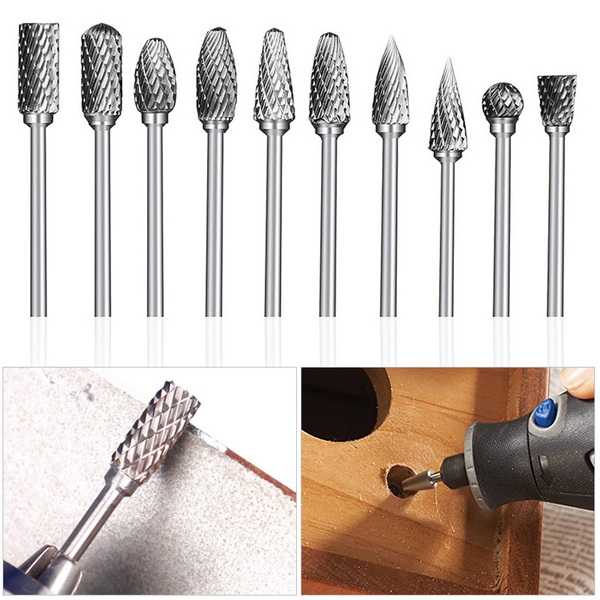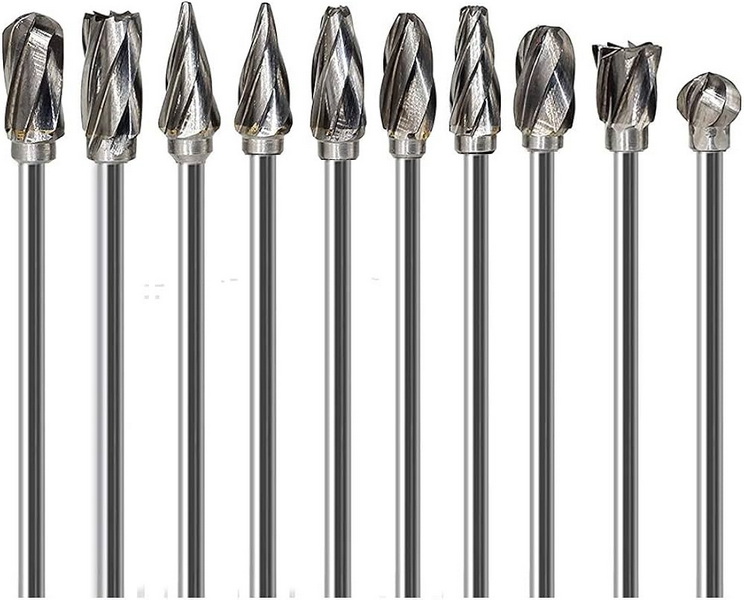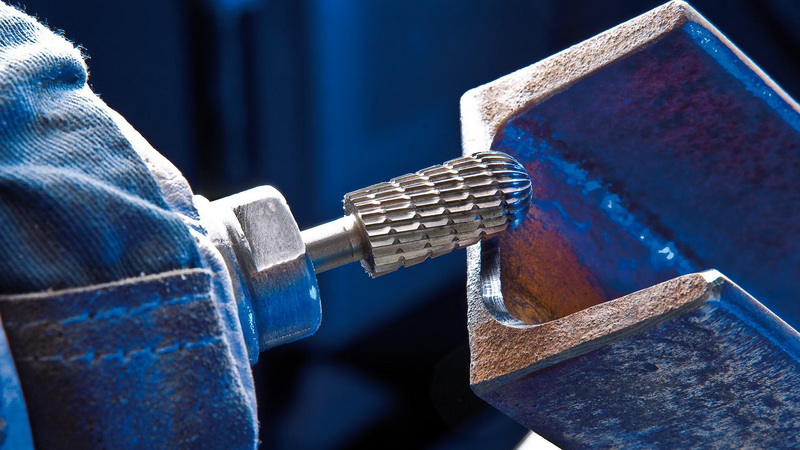Content Menu
● Understanding Tungsten Carbide
>> Physical Properties of Tungsten Carbide
>> Tungsten Carbide Structure
● Breaking Tungsten Carbide: The Challenge
>> 1. Hardness vs. Toughness
>> 2. Types of Stress
>> 3. Tools Required
>> 4. Applications Impacting Breakability
● Implications of Hardness in Various Industries
>> 1. Manufacturing Tools
>>> Types of Tools Made from Tungsten Carbide
>> 2. Jewelry Industry
>>> Advantages of Tungsten Carbide Jewelry
>> 3. Aerospace and Defense
>>> Applications in Aerospace
>> 4. Mining Industry
>>> Impact on Mining Efficiency
● Challenges Associated with Breaking Tungsten Carbide
>> 1. Cost Considerations
>> 2. Equipment Requirements
>> 3. Safety Concerns
● Conclusion
● Frequently Asked Questions (FAQ)
>> 1. What makes tungsten carbide so hard?
>> 2. Can tungsten carbide be cut or shaped?
>> 3. Is tungsten carbide brittle?
>> 4. What are common uses for tungsten carbide?
>> 5. How does temperature affect tungsten carbide?
● Citations:
Tungsten carbide is renowned for its exceptional hardness and durability, making it a preferred material in various industrial applications. This article delves into the properties of tungsten carbide, the challenges associated with breaking it, and the implications of its hardness in practical scenarios.

Understanding Tungsten Carbide
Tungsten carbide (WC) is a chemical compound composed of tungsten and carbon. It is formed by combining equal parts of tungsten and carbon atoms, resulting in a dense, hard material that exhibits remarkable physical properties. The Mohs hardness scale rates tungsten carbide between 9 and 9.5, making it one of the hardest materials available, second only to diamond.
Physical Properties of Tungsten Carbide
- Hardness: With a Mohs hardness of 9-9.5, tungsten carbide is extremely resistant to scratching and abrasion.
- Density: It has a specific gravity of approximately 15.6, contributing to its weight and durability.
- Melting Point: The melting point of tungsten carbide is around 2,870°C (5,200°F), which is significantly higher than most metals.
- Compressive Strength: It possesses high compressive strength, exceeding that of most metals and alloys, making it ideal for tools and machinery.
Tungsten Carbide Structure
The structure of tungsten carbide consists of a face-centered cubic (FCC) lattice arrangement. This structure contributes to its hardness and strength, as the tightly packed atoms resist deformation under stress.
Breaking Tungsten Carbide: The Challenge
Given its hardness, breaking tungsten carbide is not a straightforward task. Several factors contribute to this difficulty:
1. Hardness vs. Toughness
While tungsten carbide is incredibly hard, it is also somewhat brittle. This means that while it can resist wear and deformation under pressure, it can fracture under impact or stress if not designed appropriately.
2. Types of Stress
The ability to break tungsten carbide depends on the type of stress applied:
- Compressive Stress: Tungsten carbide can withstand high compressive forces without deforming.
- Tensile Stress: It is more susceptible to breaking under tensile stress due to its brittleness.
3. Tools Required
To break tungsten carbide effectively, specialized tools are often necessary:
- Diamond Tools: Given that diamond is harder than tungsten carbide, diamond-tipped tools are commonly used for cutting or grinding.
- High-Power Lasers: In industrial applications, lasers can be employed to heat and break down the material.
4. Applications Impacting Breakability
In practical applications such as mining or metalworking, tungsten carbide's resistance to wear makes it invaluable for drill bits and cutting tools. However, when subjected to extreme forces or impacts beyond its tensile strength, it can shatter.

Implications of Hardness in Various Industries
The hardness of tungsten carbide has significant implications for its use across several industries:
1. Manufacturing Tools
Tungsten carbide is widely used in manufacturing cutting tools due to its ability to maintain sharp edges over extended periods. This results in reduced downtime for tool replacement and increased productivity.
Types of Tools Made from Tungsten Carbide
- Drill Bits: Used in construction and mining for their ability to penetrate tough materials.
- End Mills: Employed in milling machines for precision cutting.
- Inserts: Used in lathes for turning operations.
2. Jewelry Industry
In jewelry making, tungsten carbide's scratch resistance makes it an attractive option for rings and other accessories. Its durability ensures that pieces retain their appearance over time.
Advantages of Tungsten Carbide Jewelry
- Durability: Resistant to scratches and tarnishing.
- Weight: Provides a substantial feel without being overly heavy.
- Style Options: Available in various finishes and designs.
3. Aerospace and Defense
Due to its high melting point and strength at elevated temperatures, tungsten carbide is utilized in aerospace applications where materials must withstand extreme conditions without degrading.
Applications in Aerospace
- Engine Components: Used in turbine engines due to its heat resistance.
- Armor-Piercing Ammunition: Its density makes it effective in military applications.
4. Mining Industry
In mining operations, tungsten carbide drill bits are favored for their ability to penetrate hard rock formations efficiently. The longevity of these tools reduces operational costs significantly.
Impact on Mining Efficiency
The use of tungsten carbide tools leads to faster drilling speeds and less frequent tool changes, which translates into lower labor costs and increased productivity.
Challenges Associated with Breaking Tungsten Carbide
Despite its advantages, there are challenges related to breaking or machining tungsten carbide:
1. Cost Considerations
The cost of tungsten carbide products can be significantly higher than those made from other materials due to the complexity involved in manufacturing them.
2. Equipment Requirements
Machining or breaking tungsten carbide requires specialized equipment that may not be readily available in all workshops or manufacturing facilities.
3. Safety Concerns
When breaking or grinding tungsten carbide, safety precautions must be taken due to the potential release of fine particles that can be harmful if inhaled or ingested.
Conclusion
Breaking tungsten carbide presents unique challenges due to its extreme hardness and brittleness under certain conditions. While it can withstand significant compressive forces, it may fracture under tensile stress or impact if not designed correctly. Its properties make it indispensable across various industries, from manufacturing tools to jewelry design.
In summary, understanding the properties of tungsten carbide helps us appreciate its applications and limitations in real-world scenarios. As technology advances, new methods for working with this remarkable material will likely emerge, further expanding its utility across diverse fields.

Frequently Asked Questions (FAQ)
1. What makes tungsten carbide so hard?
Tungsten carbide's hardness arises from its unique crystal structure formed by the bonding of tungsten and carbon atoms in equal parts.
2. Can tungsten carbide be cut or shaped?
Yes, but specialized tools such as diamond-tipped saws or high-power lasers are typically required due to its hardness.
3. Is tungsten carbide brittle?
Yes, while it is very hard, tungsten carbide can be brittle under certain conditions, particularly when subjected to tensile stress.
4. What are common uses for tungsten carbide?
Common uses include cutting tools in manufacturing, jewelry in fashion industries, and components in aerospace applications due to its durability.
5. How does temperature affect tungsten carbide?
Tungsten carbide maintains its strength up to high temperatures but begins to oxidize at around 500–600°C (932–1112°F).
Citations:
[1] https://www.allied-material.co.jp/en/techinfo/tungsten_carbide/features.html
[2] https://www.vedantu.com/chemistry/tungsten-carbide
[3] https://carbideprocessors.com/pages/carbide-parts/tungsten-carbide-properties.html
[4] http://www.tungsten-carbide.com.cn
[5] https://en.wikipedia.org/wiki/Tungsten_carbide
[6] http://www.chinatungsten.com/Tungsten-Carbide/Properties-of-Tungsten-Carbide.html
[7] https://www.carbideprobes.com/wp-content/uploads/2019/07/TungstenCarbideDataSheet.pdf
[8] https://stock.adobe.com/search?k=tungsten+carbide
[9] https://www.linde-amt.com/resource-library/articles/tungsten-carbide
















